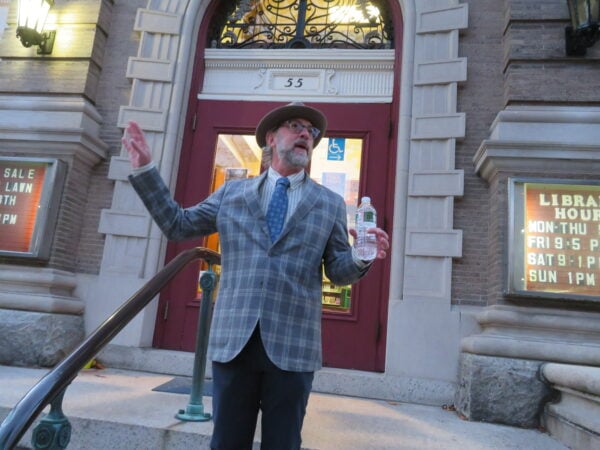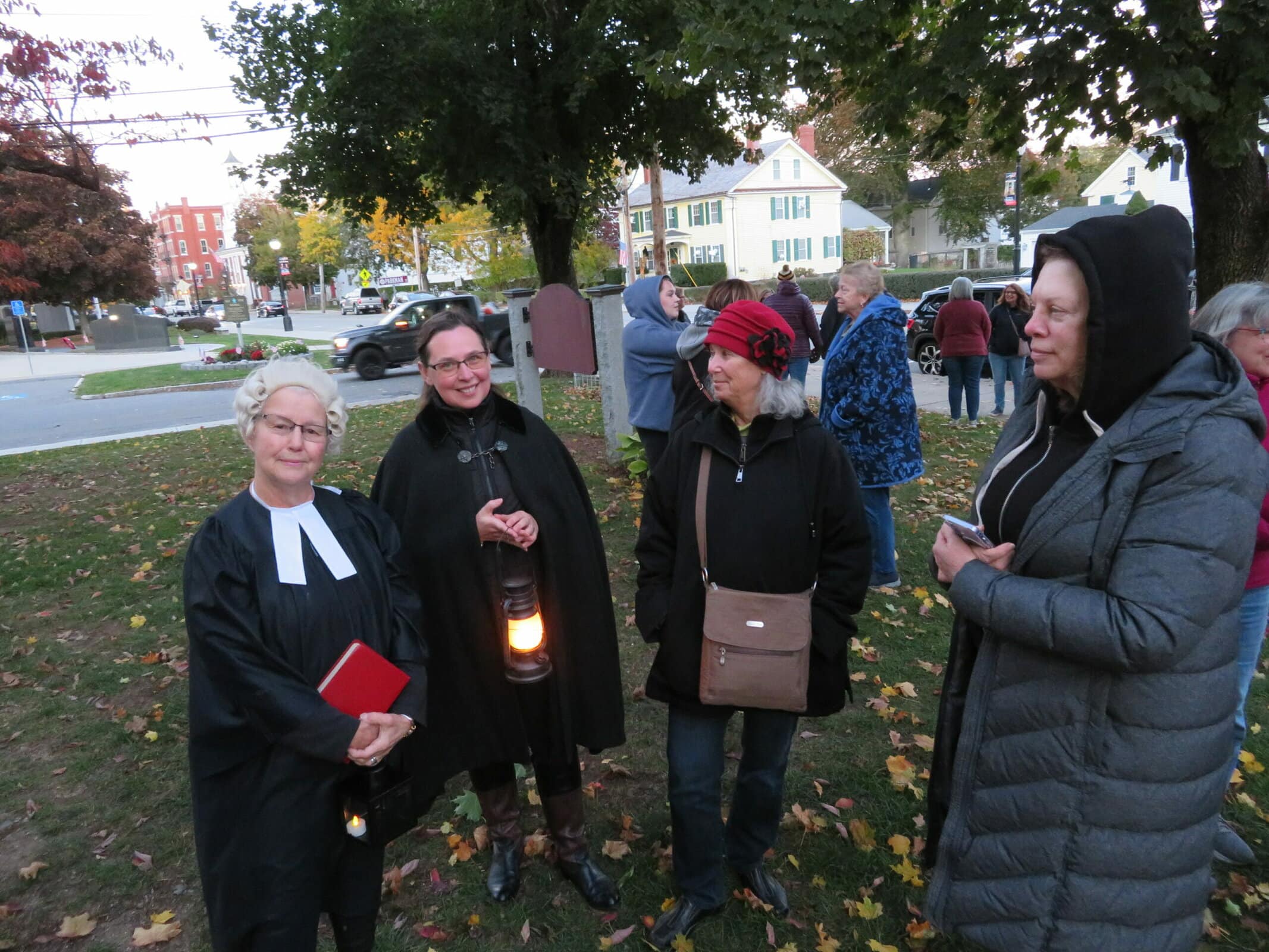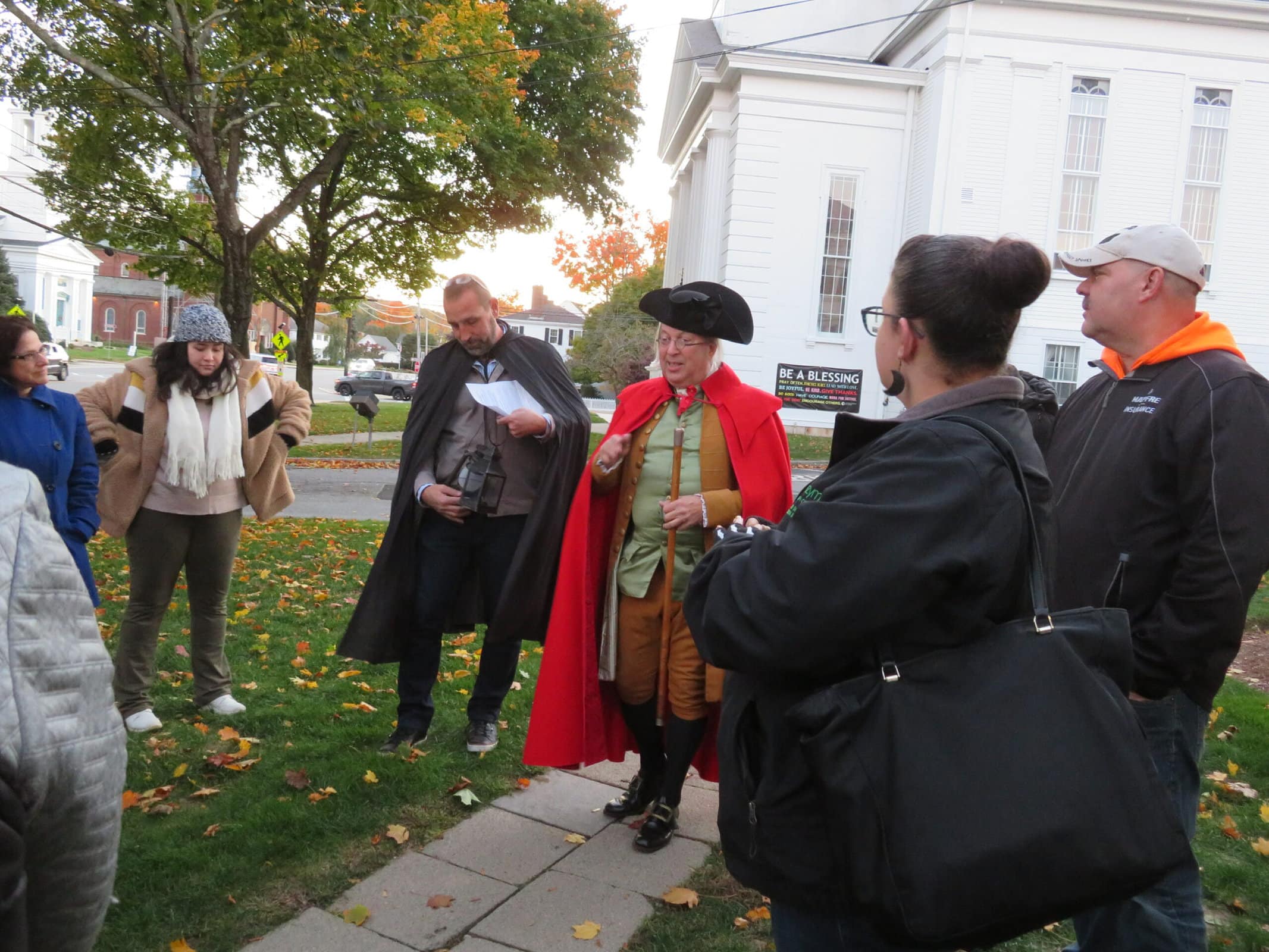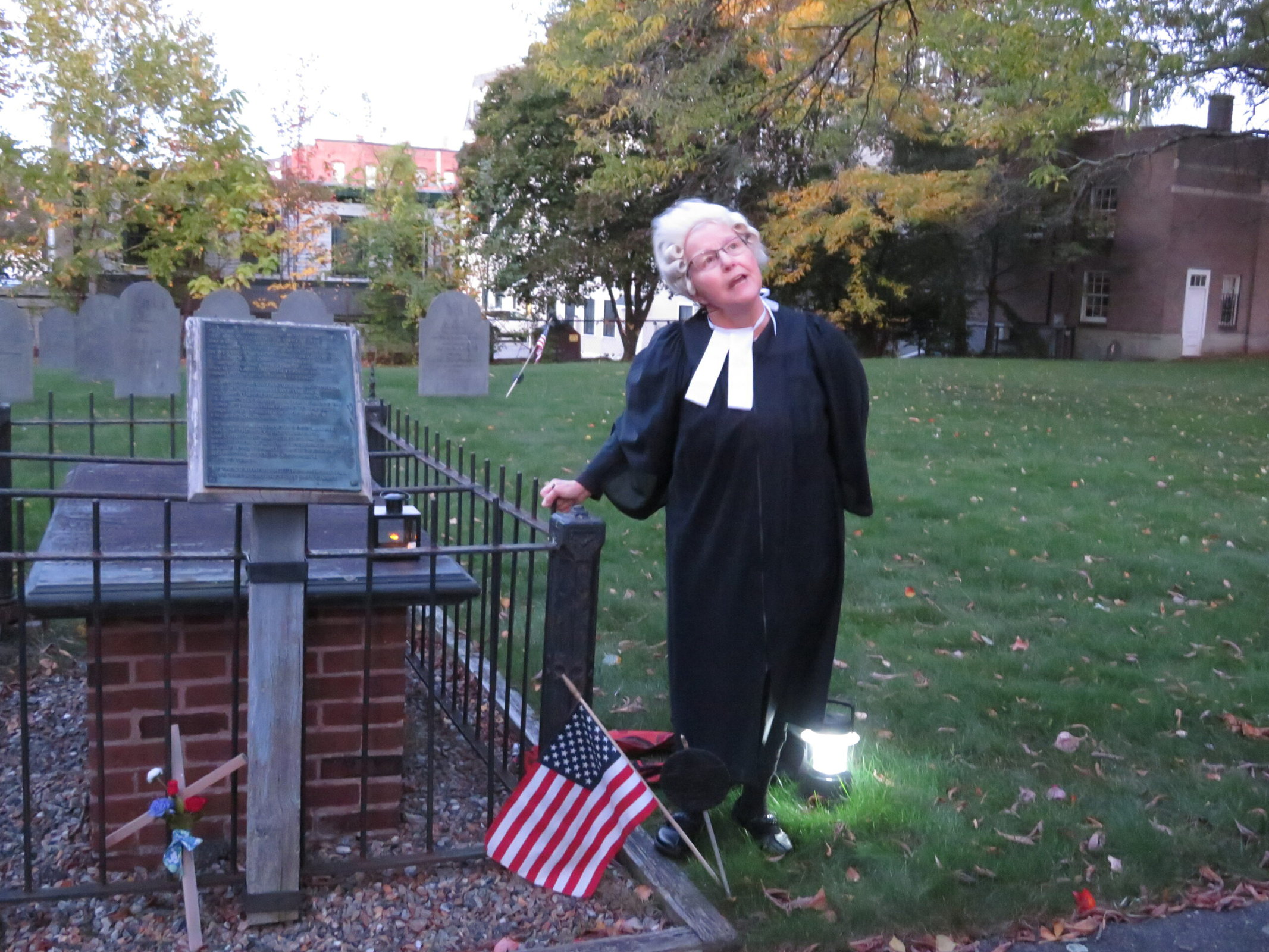
WESTBOROUGH – For one night, “Sneaks” and Rev. Ebenezer Parkman, “Baby Doll” and Tom Cook came forth from the great beyond to tell their tales of crime, murder and mayhem.
With the arrival of twilight on Oct. 20, nearly 80 curious history travelers joined a “Wicked Westborough” walking tour.
The tour began on the steps of the Westborough Public Library where tour guides led the groups to four stops.
The first stop was Memorial Cemetery, where the “spirit” of Rev. Parkman portrayed by Kris Allen greeted the crowd.
Standing next to his eternal resting place, Allen told of how Parkman was admired for his sage advice and his practicality.
During his six decades as minister, Parkman wrote a diary that depicted life in colonial Westborough.
Some of his entries concerned Tom Cook, a “leveler” who robbed from wealthy farms and gave to poorer farms.
“He was our Robin Hood,” said Allen.
Cook was beloved by children because he would give them candy.
After decades of stealing, Cook ended up on the town’s poor farm, where he died at the age of 89. His gravesite is unknown.
The next stop was a stone marker near the high school. There, Marcia Hoffman told of how in 1704, a group of Iroquois kidnapped four young male members of the Rice family and killed a fifth.
The boys ended up at an Iroquois settlement in Montreal. Years later, their father, Thomas Rice, raised enough money to go to Montreal and pay for the boys’ freedom. However, only one boy returned to Westborough. One of the other boys visited Westborough in 1740 and recognized the spot where he was abducted.
A marker to commemorate the raid was established in 1904.
From there, the group went to Midland Cemetery, where Garry Gregory, in full colonial garb, told another tale of Parkman when he encountered Hugh Henderson, who was an Irish immigrant who began drinking and stealing shortly after his arrival in Rhode Island in the 1720s.
In Westborough, Henderson was caught breaking into a tavern twice. He was sent to the jail in Worcester, where he was sentenced to hang. Parkman came to minister to Henderson, who tried to escape, but he was caught.
After confessing to his life of crime, and showing much remorse, Henderson was hanged.
The final stop was the Central House Tavern, where local historian Anthony Vaver greeted the crowd as Harry “Sneaks” Baker.
In 1919, Baker and his wife, Eleanor “Baby Doll,” had arrived in Westborough. They went to the tavern in search of a room, and were directed to Dwight Chapman, a Civil War veteran who owned a house and garden near the tavern. According to Vaver, Chapman rented a room to the couple. After a couple of weeks, the Bakers disappeared. A short while later, someone reported to the police that Chapman was missing.
Police went into Chapman’s rooms and discovered a safe still locked but with lots of damage. They then walked into the bedroom, where they found Chapman’s body under a blanket with his head covered in blood.
Police soon found the murder weapon – a claw hammer – the tools used to try and break the safe. Believing that robbery was the motive, police soon determined that the Bakers were prime suspects. However, they already had put the town far behind them.
Not far enough, as it turned out. Thanks to leads provided by the railroads, the police located the Bakers in Bangor, Maine.
Sent back to Westborough, Harry said he killed Chapman defending his wife’s honor. He admitted to second-degree murder and sentenced to life in prison. “Baby Doll” was given a year in prison for being an accessory.
That is not the end of the story. Police discovered that the Bakers were not married to each other and Eleanor had spent time in prison for throwing acid on her then-husband.
After a while Eleanor dumped Harry and took up with a married police officer in Boston. After he found out, Harry decided to recant his confession and claimed that Eleanor was the murderer.
By then, Eleanor “Baby Doll,” who was later known as “Tiger Kitten,” had taken off to Mexico, never to be heard from again.
As for Harry, he was pardoned by the governor after serving 15 years. He moved to Texas, where he picked up another prison sentence for armed robbery.
“Wicked Westborough” was co-sponsored by the Westborough Center for History and Culture in the Westborough Public Library, the Westborough Historical Society and Leduc Art & Antiques.



















